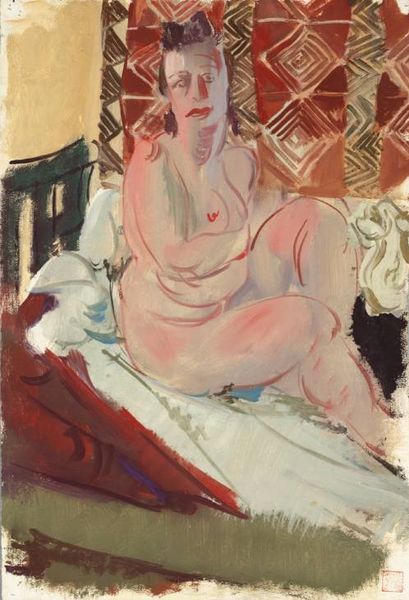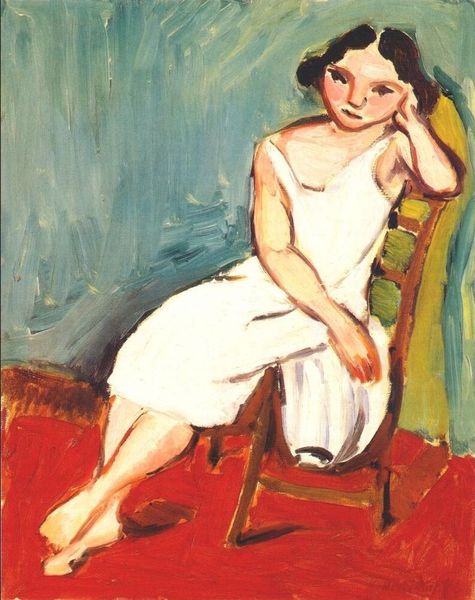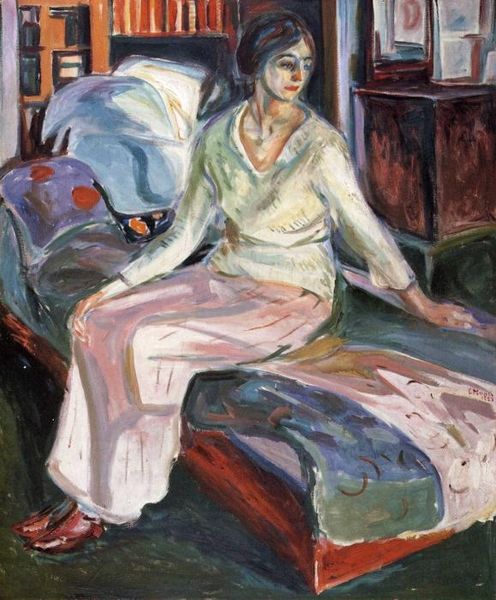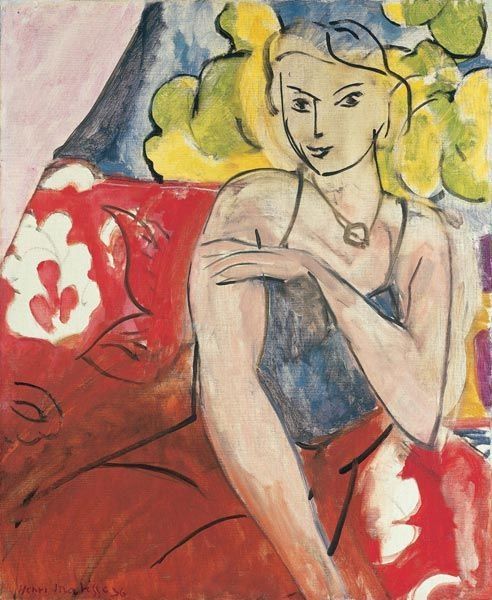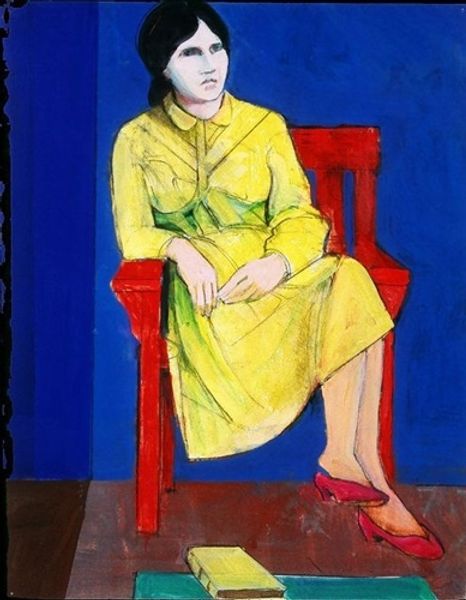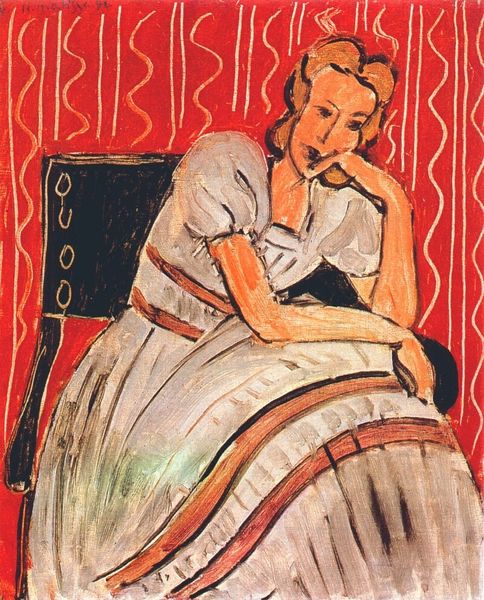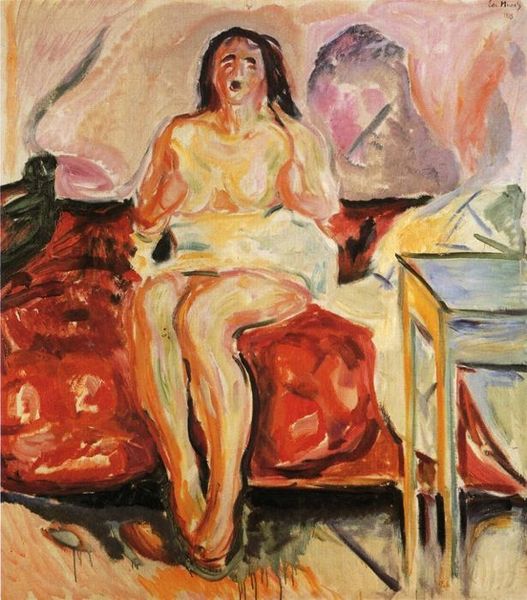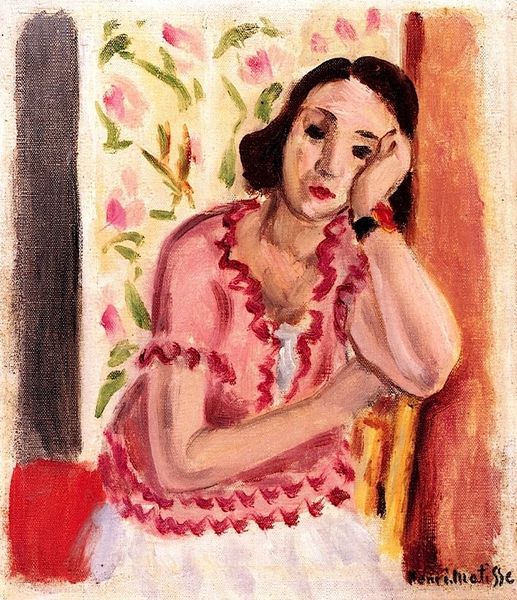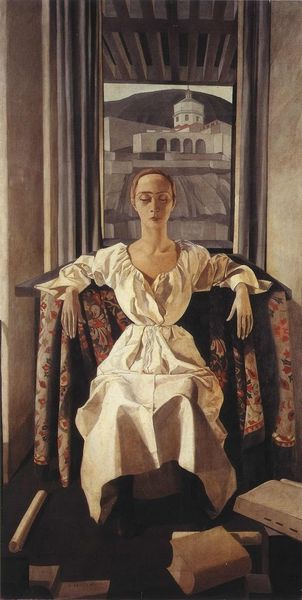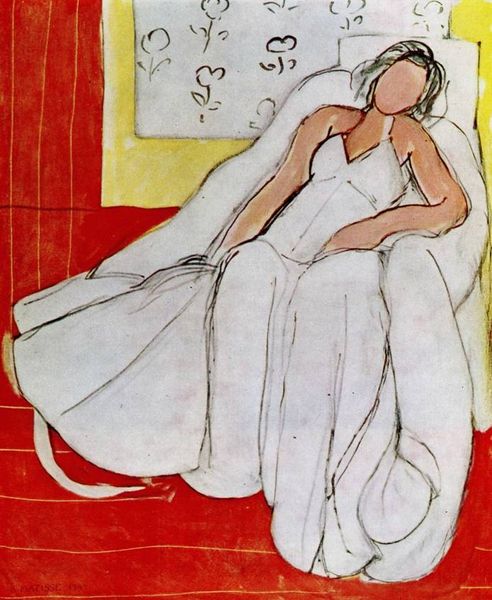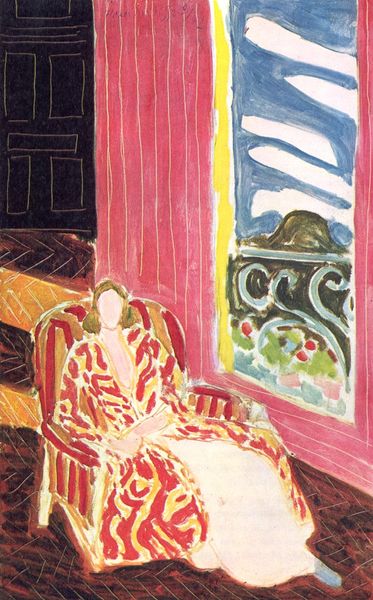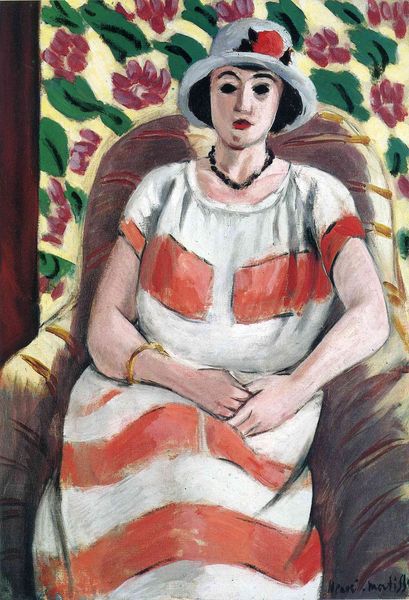
Copyright: Henri Matisse,Fair Use
Editor: Here we have Henri Matisse’s "Simone in Striped Armchair," painted in 1942. It looks like it was created using oil paints, and there’s something intriguing about the flattening of space, with the grid-like background clashing against the figure and chair. What's your take on this piece? Curator: For me, the most compelling aspect lies in understanding the constraints Matisse was working within, and how those conditions shaped the final product. Think about 1942 – France was occupied. Material scarcity profoundly impacted artistic production. Consider the materials he used. Was the oil paint easily accessible, or did he perhaps have to improvise with lower-quality pigments and repurposed canvas? This constraint potentially contributes to the flatness you noticed. How does understanding this alter your interpretation of the work? Editor: That’s a great point! So, the materials at hand might have forced his stylistic choices. It wasn’t just a preference, but perhaps a necessity? Curator: Exactly! And the “necessity” can also extend to the subject matter. A portrait suggests a patron, or perhaps simply a readily available sitter during a time of limited mobility. Who was Simone? Her social standing and relationship to Matisse impact our perception of this “intimate” portrait, because we also see evidence of Matisse's daily life at the time. These are valuable, crucial components that the formal elements alone do not deliver. Editor: I never considered that material conditions could influence such fundamental aspects of a painting. I was always focused on composition. Curator: Precisely. This Materialist view asks us to think about the production process itself: how was the painting made, under what circumstances, and what did those choices and circumstances then *mean*? Editor: I'll definitely look at art with fresh eyes now, keeping production and social context in mind. Curator: Great, it's about moving beyond the surface. Considering the labor, materiality, and consumption involved in creating the work is vital.
Comments
No comments
Be the first to comment and join the conversation on the ultimate creative platform.
